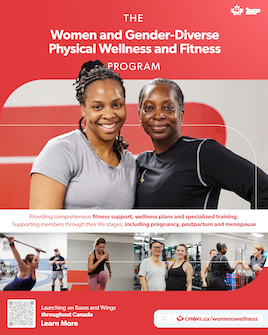Best of CMF Magazine
Paper Organization in 5 Days
Tell the truth. Did pulling everything together to do your taxes this year almost make you weep? Do most activities require the first step of moving a pile of paper out of the way? Do you feel like you are drowning in a sea of bills, flyers, school newsletters, coupons, recipes, statements, magazines, forms, sticky notes, receipts … the list could go on and on? Here are some suggestions for taming the paper monster in 5 short days.
Day One:
First, stop the paper from coming into your house in the first place. Go to the Canadian Marketing Association website to remove yourself from their member mailing lists. This won’t get you off every list out there, but it’s a start. And remember to do this each time you move! While you’re at it you can get yourself on the government’s Do Not Call List . It won’t lessen the amount of paper in your life, but it will get rid of some of those annoying telemarketing calls!
Second, gather all the paper together in one place. Go through your entire house and grab the piles. You may want to put them all in a laundry basket or box. Get every lose piece of paper that you have lying around the house – every last one – from counters, drawers, purses, backpacks – even your car.
Day Two:
Now you need to do a quick sort of the papers you have gathered. This is something that you could actually do in front of the TV, or while talking on the phone. It doesn’t require a ton of thought – you just need to make a quick decision on each piece of paper. If it’s trash, put it directly into the recycle bin/bag. Be ruthless at this point. The rest of the papers should be sorted in piles. What those piles will be will depend on the type of paper in your life, but it’s a fair bet that you will have the following piles:
– Needs Action
– Receipts
– Notes
– Recipes
– Phone Numbers/Email Addresses
– To Be Filed
– To Be Read
– Magazines/Flyers
Deal with the “Needs Action” pile first. Sign those permission slips. Send in for those rebates. Mail that birthday card. Deal with everything in that pile. And then think of a system for dealing with action items. I use a basket that sits on my desk. Anything needing attention goes in there until I can deal with it. Whatever method you choose, make sure that that basket or file is empty at the end of each day. Teach your kids to put permission slips right into the basket.
Day Three:
Today you will deal with the receipts and notes piles.
Go through the receipts and decide which you want to keep. There are two reasons to keep a receipt. First, keep everything you still need to reconcile with your budget and/or bank statement. Once you’ve reconciled those, they can be shredded. Secondly, you will still want to keep any receipts for things that you may need to return or items that come with a warranty. You will want to create a place to store these types of receipts. A decorative box with a lid is the perfect spot for receipts.
As for the notes pile, you’ll want to collect them into one place. A pretty notebook that you keep in your purse can be a very effective way to keep track of all of those bits of information that you want to hang on to: the restaurant that your friend recommended; the name of that moisturizer you want to buy; your running to-do-list; the name of the book you want to order from the library. If you have a smart phone, use the Notes App. There are also a variety of to-do list apps available to help as well.
Day Four:
Recipes are so plentiful now that we often find ourselves buried in them. There are so many recipes we want to try – but we need a system for organizing them. If you are fond of trying new recipes, you will need an accordion file and a binder filled with page protectors. File new recipes in the accordion file (in categories such as dinner, soup, salad, cakes, cookies, etc). Once you’ve had a chance to try them – if your family likes them – you can move them to the binder, which acts as your “permanent” recipe collection. You’ll want to use dividers to create categories that are useful to you.
Secondly, take all of those bits of paper with phone numbers and addresses on them and transfer them to a permanent phone book (or your contacts on your smart phone).
Day Five:
Now you should just have a “To Be Filed” pile and a reading pile. Set up a filing system that works for you – either in an accordion file or filing cabinet depending on how much paper you have. The reading pile can go near your bed or reading chair for you to go through when you are reading.
The computer age was supposed to eliminate the need for paper documents. Well we all know how well that worked out! By taming the paper monster, at least you will be able to find what you need, when you need it. And no more late permission slips!
The Moving Binder:
Special consideration needs to be given to paper when you are moving. The day you find out that you are moving, buy yourself a sturdy 2-inch binder, some dividers and page protectors (the page protectors eliminate the need to 3-hole punch a piece of paper before you put it in the binder). Also, snatch several pages of loose-leaf paper from one of your kids (for notes). The divider categories that I have used in the past include:
- Military (for posting order, as well as your documents from Brookfield);
- Mover (for all of their documents);
- Utilities (for keeping track of what is getting turned off and on and when – ALWAYS write down the name of the person you spoke with and get a confirmation number if you can);
- Travel (for hotel confirmations or flight information) – use a page protector to hold any receipts you may need to keep;
- Old House – for legal documents/march out record or anything else that deals with the house you are leaving;
- New House – for anything dealing with the house you are moving to.
Moving is stressful enough – you don’t want to be losing important documents that you might need in the process. The Moving Binder is a lifesaver to have with you from start to finish!
**This article was originally featured in the March 2014 issue**
Laura Keller has enjoyed writing as long as she can remember. Eventually she became the wife of a Combat Engineer and mom of 3. With her husband’s retirement from the CF, they are all learning to adjust to life after the military. Laura also writes her blog at www.HappyCanadianHome.com.









